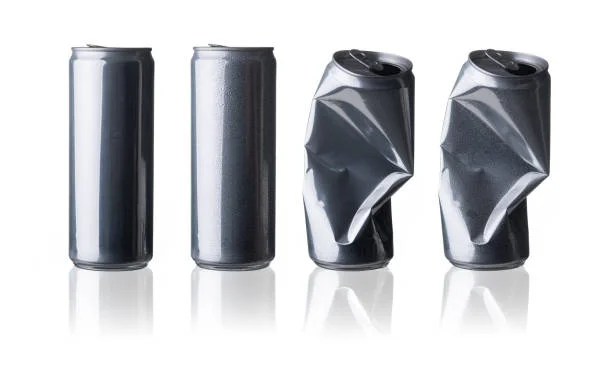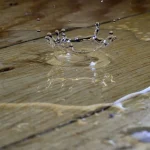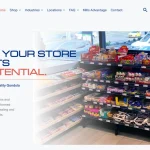The world keeps moving faster. More parcels, more deliveries, more shelves stacked with fragile goods that travel further than they ever did before. Somewhere in that rush, something keeps breaking. Products arrive dented, scratched, or oddly bent beneath their labels. Complaints rise quietly at first, then suddenly spike during busy seasons when every box is handled a little rougher than usual product damage.
It creates a strange question. With all the modern packaging technology available, why does product damage keep climbing? The answer sits somewhere between speed, handling, and the simple truth that thin protection fails under pressure. This is where better shrink packaging begins to change the conversation.
The Hidden Path of Every Product
Every item travels further now. Even small businesses ship nationwide. Warehouses stack goods high, forklifts move fast, and transport chains involve more middle steps than most people realise. A product that once needed to survive a short trip now faces thousands of tiny movements.
Inside that journey are moments the customer never sees. Boxes fall slightly on conveyors. Pallets shift when trucks brake. Items knock against each other during sorting. Tiny impacts that do not look dramatic at all slowly add up to real damage or product damage.
Most damage happens long before anyone opens the box. It happens in silence.
Explore this related post for added insight that builds on your current read.
Where Packaging Still Fails
Traditional protection methods look strong from the outside, but many rely on air gaps or loose layering that collapses when products shift. Cardboard bends with moisture. Soft wrapping tears. Fillers sink.
Shrink packaging steps into that weakness and tightens the structure. It clings to the product and removes space for sudden movement. That is the crucial difference. Stability reduces risk more than thickness ever has.
Even with this advantage, some industries still rely on older materials only because the change feels inconvenient. Over time, the cost of damaged goods surpasses any savings from outdated methods. The gap between protection and reality widens.
The Pressure of Modern Transport
Logistics has become faster, not gentler. Couriers move quicker. Sorting belts run faster. Storage stacks become taller. Small impacts that would not matter in a slow system suddenly matter a lot.
This shift creates subtle trouble. Fragile products no longer face one kind of pressure but many. Vibration from long drives, sideways force during turns, and small impacts from automatic sorting arms all interact with packaging that is not built for repeated micro stress.
Damage in 2026 often comes from repeated motion, not single accidents. Shrink packaging reduces that motion by holding everything still.
Research Behind the Solution
A study titled The Technology and Application of Shrink Packaging explains how properly applied shrink films increase stability, resist punctures, and protect surfaces during long transport. The report highlights something important. When packaging tightens evenly around an object, the material carries stress instead of the product.
That approach does not sound dramatic, but it transforms the safety of fragile goods. The packaging becomes an outer skin, not a loose jacket. With the right heat and tension, the wrap supports the item through pressure and vibration. The science is simple. Control the movement and the damage decreases for product damage.
Why Damage Rates Keep Rising
Markets are bigger now. More items move per day. When volume grows, risk grows with it. A few key reasons explain the rise.
First, products themselves are often lighter and more delicate than older models. Electronics, glass containers, and cosmetic bottles look sleek, but that thinness relies on good packaging.
Second, global supply chains involve more handling points. Every handoff carries risk. When a pallet moves from one truck to another, small impacts ripple through everything on board.
Third, customer expectations now rely on speed. Faster shipping means tighter loading times and less careful stacking. Even a small corner drop can ruin an entire batch if the packaging does not hold firm.
Shrink packaging reduces all three risks. Tight protection, fewer movement points, and stronger resistance under pressure.
How Shrink Packaging Strengthens Product Safety
Shrink films behave differently from most traditional wraps. They grip the product firmly and hold shape through weather, humidity, and vibration.
Once heated, the film contracts around the item and creates a stable layer that resists shifting. This wrapping method also reduces the open gaps where dirt, dust, or moisture sneak in. Small intrusions often weaken packaging over time. Removing those openings extends shelf life and travel survival.
There is also a visual benefit. Clear shrink packaging lets customers inspect goods without exposing them. Retailers appreciate that blend of display and protection.
Sustainability Without Sacrifice
Shrink film technology has evolved in recent years. Modern films are thinner yet stronger, which means less plastic without losing performance. It supports sustainability goals while keeping protection levels high.
Some businesses assume thicker materials equal better safety. In reality, precision based wrapping often wins. Controlled tension protects against impact even when the film is light.
Small changes in film formula make surprising differences. A slight increase in shrink ratio, a cleaner seal, or a version with improved tear resistance can reduce damage dramatically.
Cost Savings Hidden in Prevention
The price of damage is often higher than the price of new packaging. Lost stock, customer refunds, negative reviews, and wasted transport all quietly drain revenue. Prevention is invisible at first, but over months, the savings become clear.
Shrink packaging reduces breakage, reduces returns, reduces replacements, and reduces the number of times staff must rewrap damaged goods before shipping. The investment pays for itself with consistency alone.
Businesses often forget that reputation takes a hit each time a damaged product lands on a doorstep. Shrink wrap helps protect more than the item. It protects the relationship.
A Small Step With Large Impact
Better packaging does not require a dramatic overhaul. It starts with a small decision. Choosing a wrap that grips tighter. Choosing a method that prevents slips and impacts. Choosing a technique built for real world transport, not ideal conditions.
Shrink packaging fills that role because it removes the weakest point in the system, the movement inside the box. Control the movement and the product survives.
It may not look like a revolution, but it feels like one when customers open their parcels and find everything exactly as expected.
Conclusion: Protect the Product Before Protection Becomes the Problem
Product damage will continue to rise as long as transport becomes faster and goods become more delicate. But solutions already exist. Stronger wrapping, smarter materials, and better tension give small and large businesses a way forward.
Shrink packaging provides stability where it matters most. It creates a protective skin that moves through the supply chain without fear of small impacts turning into large losses.
In a world where speed often beats caution, the smartest approach is simple. Protect the product now so the journey never becomes the enemy.
FAQs
Q1: Why is product damage still increasing?
Fast transport, delicate products, and multiple handling points raise the risk during shipping and storage.
Q2: How does shrink packaging prevent damage?
It holds the product tightly, reducing movement and absorbing pressure during transport.
Q3: Is shrink packaging suitable for fragile items?
Yes. It stabilises shape, prevents vibration, and keeps surfaces protected.
Q4: Does shrink packaging help with sustainability?
Modern films are thinner and stronger, reducing material use while maintaining protection.
Q5: Can shrink packaging reduce overall shipping costs?
Yes. Fewer damaged items mean fewer returns, lower replacement costs, and better customer satisfaction.
Explore more content created to keep your curiosity active and engaged at 2A Magazine.







